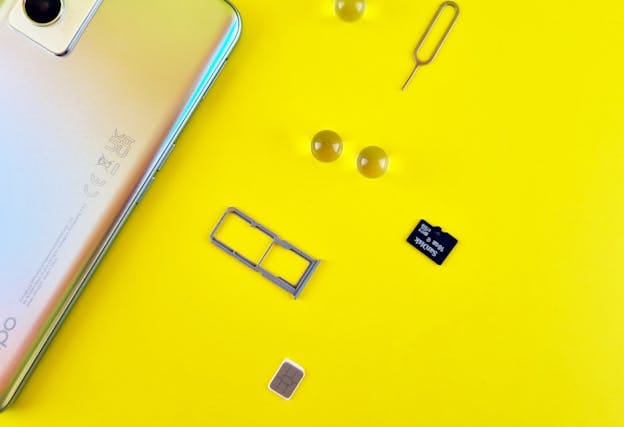Introduction: Revolutionizing Connectivity with a Virtual SIM Card in iPhone
The evolution of mobile technology has brought countless advancements, from faster processors to stunning camera systems. Among these innovations, the concept of the virtual SIM card in iPhone has gained significant attention. Apple’s integration of eSIM technology in recent years is changing how we perceive connectivity, offering users the flexibility to switch carriers, activate plans instantly, and even use multiple numbers without the need for a physical SIM card.
The virtual SIM card in iPhone is more than just a technological feature; it’s a game-changer for global travelers, dual-number users, and anyone seeking seamless connectivity. With models like the iPhone XR, iPhone 11, and newer iterations like the iPhone 14, Apple has made it increasingly convenient to adopt this futuristic approach to mobile communication.
In this detailed guide, we’ll explore everything you need to know about using a virtual SIM card in iPhone—from how it works to its benefits, compatibility, setup process, and much more. Whether you’re curious about the technology or considering making the switch, this comprehensive breakdown has you covered.
What Is a Virtual SIM Card in iPhone?
A virtual SIM card in iPhone, commonly referred to as an eSIM (embedded SIM), is a digital version of a traditional SIM card. Unlike the physical SIM card that you insert into your device, an eSIM is embedded into the hardware of your iPhone, allowing you to activate a mobile plan digitally.
This innovation eliminates the need for the physical swapping of SIM cards, making it especially convenient for frequent travelers and users managing multiple phone numbers. Apple introduced eSIM technology in its iPhone lineup starting with the iPhone XR and has expanded its functionality in subsequent models, including the iPhone 14 series.
Key features of a virtual SIM card in iPhone include:
- Seamless switching between carriers.
- Support for dual SIM functionality (eSIM + physical SIM or dual eSIMs in newer models).
- The ability to store multiple mobile plans and switch between them effortlessly.
How Does a Virtual SIM Card in iPhone Work?
The virtual SIM card in iPhone leverages embedded technology to connect your device to a carrier’s network without the need for a physical SIM card. It functions similarly to a traditional SIM card by providing the necessary credentials to authenticate your device on a cellular network.
To activate a virtual SIM card on your iPhone, users typically scan a QR code provided by their carrier or manually enter activation details. Once activated, the eSIM becomes a part of your device, allowing you to:
- Use multiple phone numbers.
- Switch carriers without visiting a store.
- Enjoy instant activation of new plans.
Apple’s iOS interface provides a user-friendly way to manage your eSIM through the “Cellular” section in the Settings app. This functionality makes the virtual SIM card in iPhone a seamless and efficient solution for modern mobile users.
Benefits of Using a Virtual SIM Card in iPhone
1. Flexibility
With a virtual SIM card in iPhone, you can easily switch between different carriers and plans without the hassle of swapping physical SIM cards. This feature is particularly beneficial for frequent travelers who need local numbers in multiple countries.
2. Space Saving
The removal of a physical SIM card slot can free up space in the iPhone’s design, potentially leading to better waterproofing and additional hardware enhancements.
3. Dual SIM Functionality
Many iPhones with eSIM capability offer dual SIM support, allowing you to use one number for personal calls and another for work. This feature is ideal for managing multiple aspects of life without carrying two devices.
4. Environmental Impact
By eliminating the need for physical SIM cards, eSIM technology reduces plastic waste and contributes to a more sustainable approach to mobile communication.
Which iPhone Models Support a Virtual SIM Card?
Apple has progressively expanded eSIM compatibility across its iPhone lineup. The following models support the virtual SIM card in iPhone:
- iPhone XR, XS, and XS Max: Introduced eSIM technology alongside a physical SIM.
- iPhone 11, 11 Pro, and 11 Pro Max: Enhanced eSIM features for global compatibility.
- iPhone SE (2nd and 3rd generation): Included eSIM support in a compact design.
- iPhone 12 and 12 Pro series: Continued dual SIM capabilities with improved network support.
- iPhone 13 and 13 Pro series: Introduced dual eSIM support, eliminating the need for a physical SIM.
- iPhone 14 series: Exclusive eSIM-only models in the U.S. market, highlighting Apple’s commitment to a digital future.
How to Activate a Virtual SIM Card in iPhone
Step 1: Obtain an eSIM Plan from Your Carrier
Most major carriers support eSIM technology. Contact your provider to ensure compatibility and request an eSIM activation plan.
Step 2: Scan the QR Code or Enter Activation Details
Once you receive your activation details, navigate to Settings > Cellular > Add Cellular Plan. Use your iPhone’s camera to scan the QR code, or manually enter the information provided by your carrier.
Step 3: Customize Your Plan Settings
After activation, you can label your plans (e.g., “Personal” or “Work”) and set a default line for calls, messages, and data usage.
Virtual SIM Card for Travelers
The virtual SIM card in iPhone is a game-changer for international travelers. Instead of buying local SIM cards in every country, users can activate an eSIM plan instantly upon arrival. Several global eSIM providers, such as Google Fi and Airalo, offer affordable international plans compatible with most iPhone models.
Benefits for travelers include:
- Instant activation without visiting local carrier stores.
- Cost savings on roaming charges.
- The ability to maintain your primary number while using a local plan.
Common Questions About Virtual SIM Cards in iPhones
1. Can I Use Multiple eSIMs?
Yes, newer iPhone models like the iPhone 13 and 14 series support dual eSIMs, allowing you to switch between multiple plans seamlessly.
2. Is eSIM Available in All Countries?
While eSIM is gaining global adoption, availability varies by region and carrier. It’s best to confirm with your provider before traveling.
3. What Happens If I Reset My iPhone?
If you reset your device, you may need to reactivate your eSIM plan. Ensure you have access to your activation details before performing a factory reset.
Security and Privacy Concerns
The virtual SIM card in iPhone introduces a digital element to connectivity, raising questions about security. Fortunately, eSIM technology uses robust encryption protocols to protect user data. However, users should always secure their iPhones with strong passcodes and enable two-factor authentication for added protection.
The Future of Virtual SIM Cards in iPhones
As Apple continues to push the boundaries of innovation, the virtual SIM card in iPhone is likely to evolve further. Potential advancements include enhanced global compatibility, improved integration with Apple’s ecosystem, and expanded carrier support.
The success of eSIM technology also paves the way for a future where physical SIM cards become obsolete, making devices sleeker and more efficient.
Conclusion: Why the Virtual SIM Card in iPhone Matters
The virtual SIM card in iPhone is a testament to Apple’s vision for a seamless and user-friendly mobile experience. By replacing the traditional SIM card with an embedded solution, Apple has empowered users with greater flexibility, convenience, and sustainability.
Whether you’re a frequent traveler, a professional managing multiple lines, or someone seeking a hassle-free mobile plan, the virtual SIM card in iPhone offers unmatched benefits. As technology continues to evolve, this innovation is set to become a standard feature in the mobile industry, reshaping how we stay connected.






